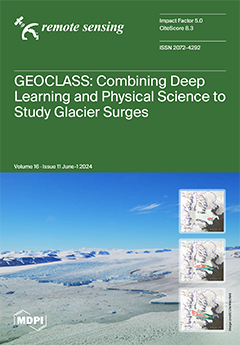Open AccessArticle
Observations, Remote Sensing, and Model Simulation to Analyze Southern Brazil Antarctic Ozone Hole Influence
by
Lucas Vaz Peres, Damaris Kirsh Pinheiro, Hassan Bencherif, Nelson Begue, José Valentin Bageston, Gabriela Dorneles Bittencourt, Thierry Portafaix, Andre Passaglia Schuch, Vagner Anabor, Rodrigo da Silva, Theomar Trindade de Araujo Tiburtino Neves, Raphael Pablo Tapajós Silva, Gabriela Cacilda Godinho dos Reis, Marco Antônio Godinho dos Reis, Maria Paulete Pereira Martins, Mohamed Abdoulwahab Toihir, Nkanyiso Mbatha, Luiz Angelo Steffenel and David Mendes
Viewed by 2011
Abstract
This paper presents the observational, remote sensing, and model simulation used to analyze southern Brazil Antarctic ozone hole influence (SBAOHI) events that occurred between 2005 and 2014. To analyze it, we use total ozone column (TOC) data provided by a Brewer spectrophotometer (BS)
[...] Read more.
This paper presents the observational, remote sensing, and model simulation used to analyze southern Brazil Antarctic ozone hole influence (SBAOHI) events that occurred between 2005 and 2014. To analyze it, we use total ozone column (TOC) data provided by a Brewer spectrophotometer (BS) and the OMI (Ozone Monitoring Instrument). In addition to the AURA/MLS (Microwave Limb Sounder) instrument, satellite ozone profiles were utilized with DYBAL (Dynamical Barrier Localization) code in the MIMOSA (Modélisation Isentrope du Transport Mésoéchelle de l’Ozone Stratosphérique par Advection) model Potential Vorticity (PV) fields. TOC has 7.0 ± 2.9 DU reductions average in 62 events. October has more events (30.7%). Polar tongue events are 19.3% in total, being more frequently observed in October (50% of cases), with medium intensity (58.2%), and in the stratosphere medium levels (55.0%). Already, polar filament events (80.7%) are more frequent in September (32.0%), with medium intensity (42.0%), and stratosphere medium levels (40.7%).
Full article
►▼
Show Figures





